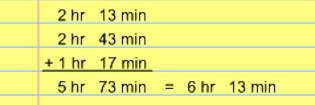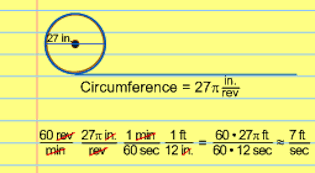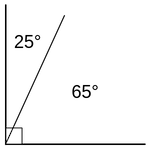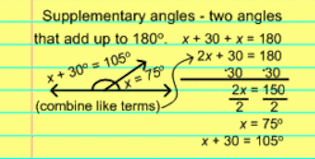


| Home | Join the Registry | Registry | EnSciTech | Journal | Downloads |
 | |
Algebra Homework HelpAlgebra is a branch of mathematics which involves the use of variables (typically letters) in place of numbers. In simple terms, algebra is about deriving unknown values through mathematical processes. Variables are combined with numbers into mathematical statements to describe relations between values. This article discusses the algebra concepts which are considered to be the most difficult for students to learn according to studies conducted by the International Academy of Science. Information from these studies has been incorporated into the development of Acellus courses for schools and Acellus Tutoring for home use. Table of ContentsExpressionsAn algebraic expression contains a combination of variables, constants, and a finite number of algebraic operations (i.e. addition, subtraction, multiplication, division and exponentiation). An expression does not contain any signs of equality (i.e. =). Example of an algebraic expression: 
The signs of operation within an expression separate it into terms. The sign of operation is considered a part of the term it follows. The above example of an expression contains two terms. Equations and InequalitiesAn equation is comprised of two expressions that are equal to each other. Each equation contains a statement of equality (i.e. =). Example of an algebraic equation: 
An inequality is comprised of two numbers or expressions that are not equal to one another. For example, the notation x < a means that x is less than a. The following are commonly used signs of inequality:
In addition to the signs of inequality shown above, there are two inequality relations that may constitute equality.
Top-Five Most Difficult Algebra ConceptsA 2013 study conducted by the International Academy of Science revealed the top-five most difficult algebra concepts for high school students. The study was conducted among thousands of high school students by assessing each student's understanding of the algebra concepts required by the Common Core standards. According to study, the following algebra topics were found to be the most difficult for students to master:
Multiplying Polynomials by MonomialsWhat is a polynomial?Polynomial comes from the Greek word poly, meaning "many" and the medieval Latin word binomium, meaning "binomial."A polynomial contains terms that may be added, subtracted or multiplied. Each term consists of the product of a constant and a finite number of variables.
Here is an example of a polynomial:
What is a monomial?A monomial is a polynomial which has only one term. Here is an example of a monomial:
Example Problem:Multiply the following monomial and polynomial: Step 1: Distribute Answer: 
Modeling Using Exponential FunctionsExponential functions are used to model a relationship of constant and proportional change between two variables (i.e. percentage decrease or increase). A common example of an exponential function is the business term "exponential growth." A business which grows exponentially starts slowly but grows more and more rapidly as time progresses. Exponential functions are used widely in physics, engineering, chemistry, economics and mathematics. Example Problem: How long will it take for there to be 1000 bacteria in the petri dish? 
Step 1: Using the formula for exponential functions show below, solve for b. Answer: The bacteria count will be 1000 in 5.9 hours. Averaging Data with Different UnitsTo find the average of data in different units, first add the different units, simplify using conversion factors, and then divide each separate unit by the number of data you are averaging. Finally, simplify your answer again using conversion factors. Example Problem: Three athletes competed in a 10-mile marathon race. The first runner completed the track in 1 hours and 17 minutes, the second in 2 hours and 13 minutes, and the third in 2 hours and 43 minutes. What is the average amount of time taken to finish the race? Step 1: Add the time taken by each athlete. 
Step 2: Divide the total time (6 hr. 13 min.) by the number of athletes (3). 
Answer: Average time = 2 hr. 4 min. 20 sec. Converting Units for Derived QuantitiesYou can use units to help you know how to set up math problems. Set up the problem so all the units cancel out except for the units you want. Example Problem: A bicycle has a 27 inches diameter tire that is going around at 60 rpm (revolutions per minute). How many feet per second is this bicycle going? 
Answer: 7 ft. / second Complementary and Supplementary AnglesWhat are supplementary angles? Example of supplementary angles: 
What are complementary angles? Example of complementary angles: 
Example Problem: 
Answer: 105° |
| Copyright © 2025 International Academy of Science. All Rights Reserved. |